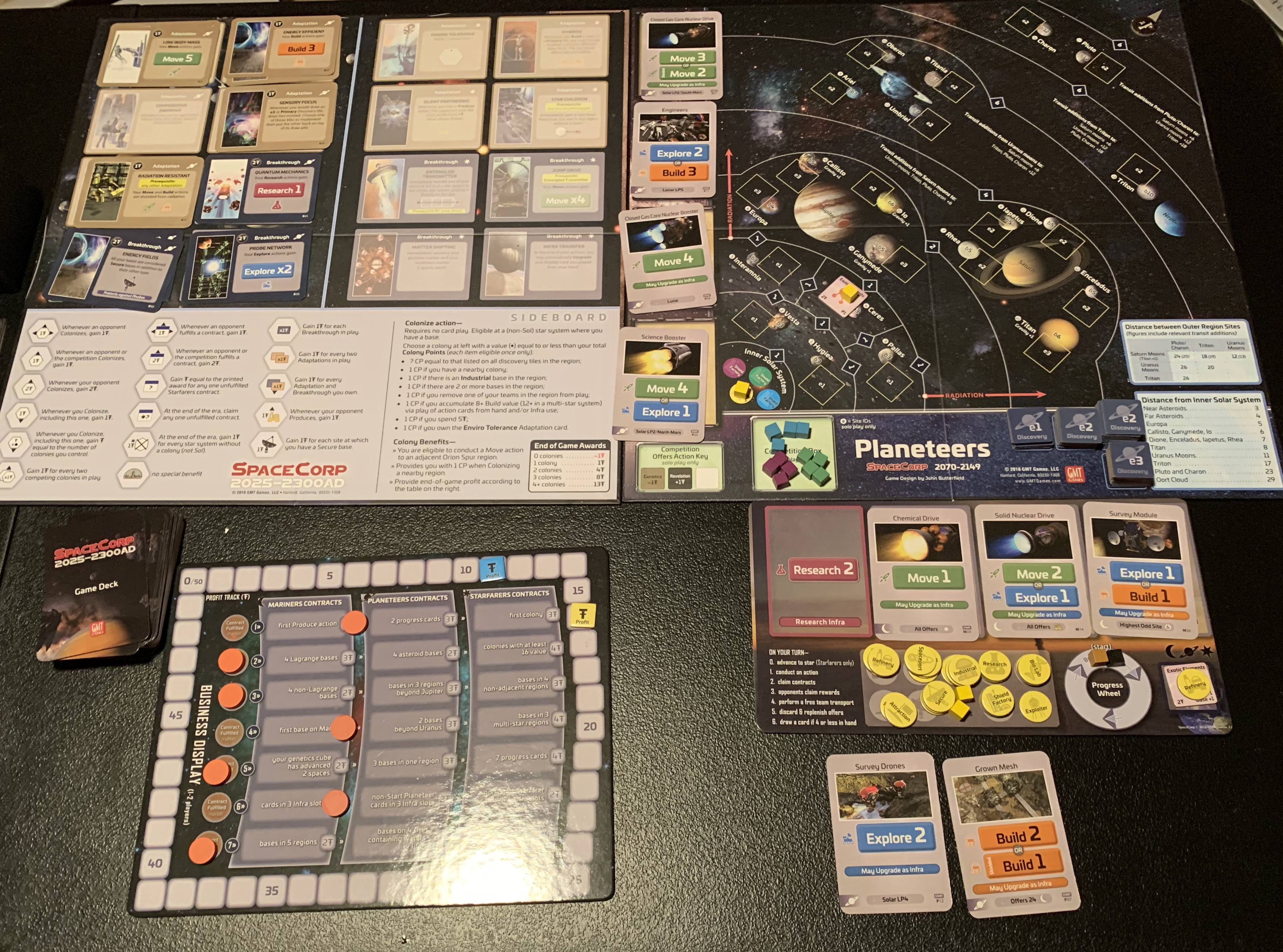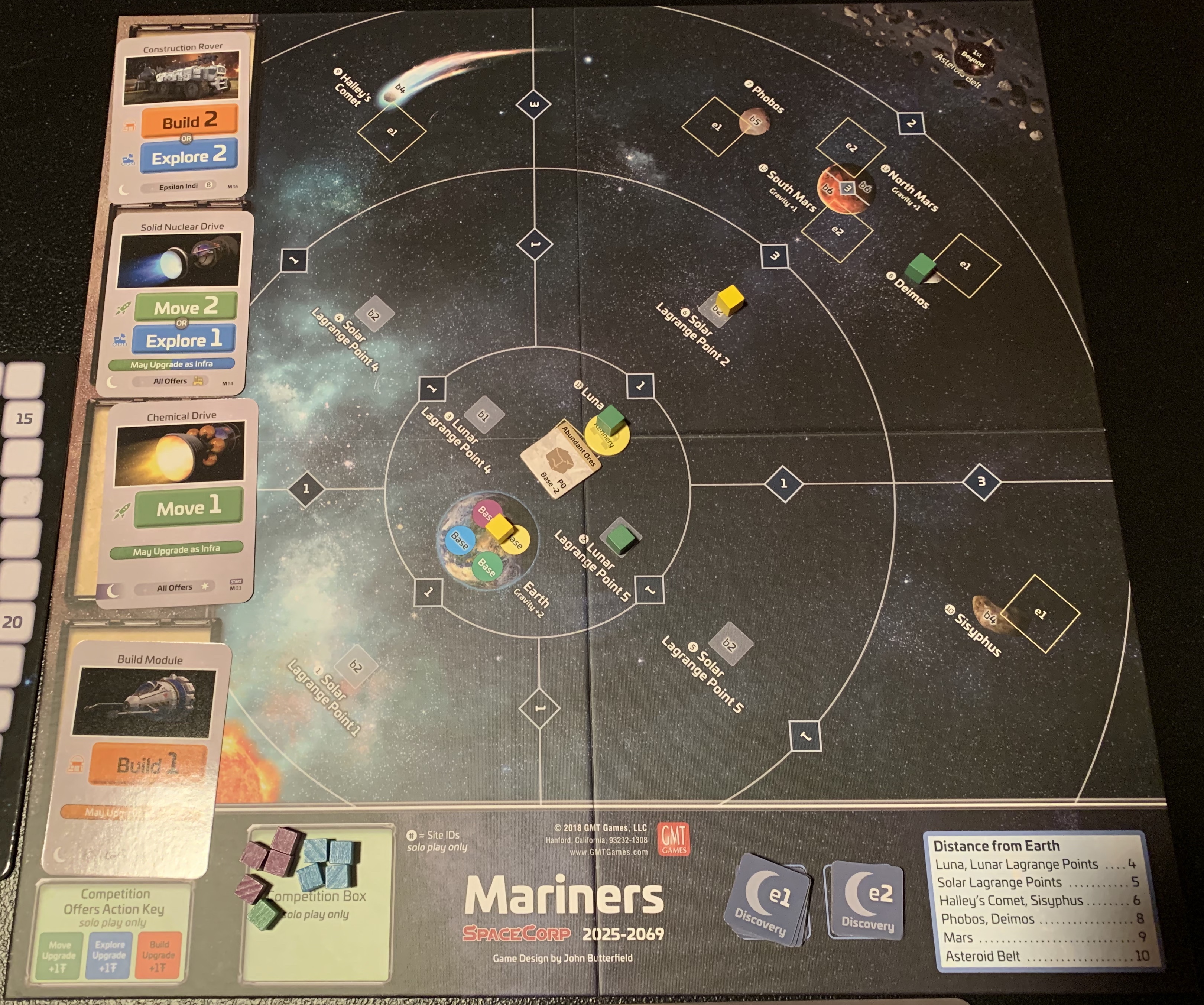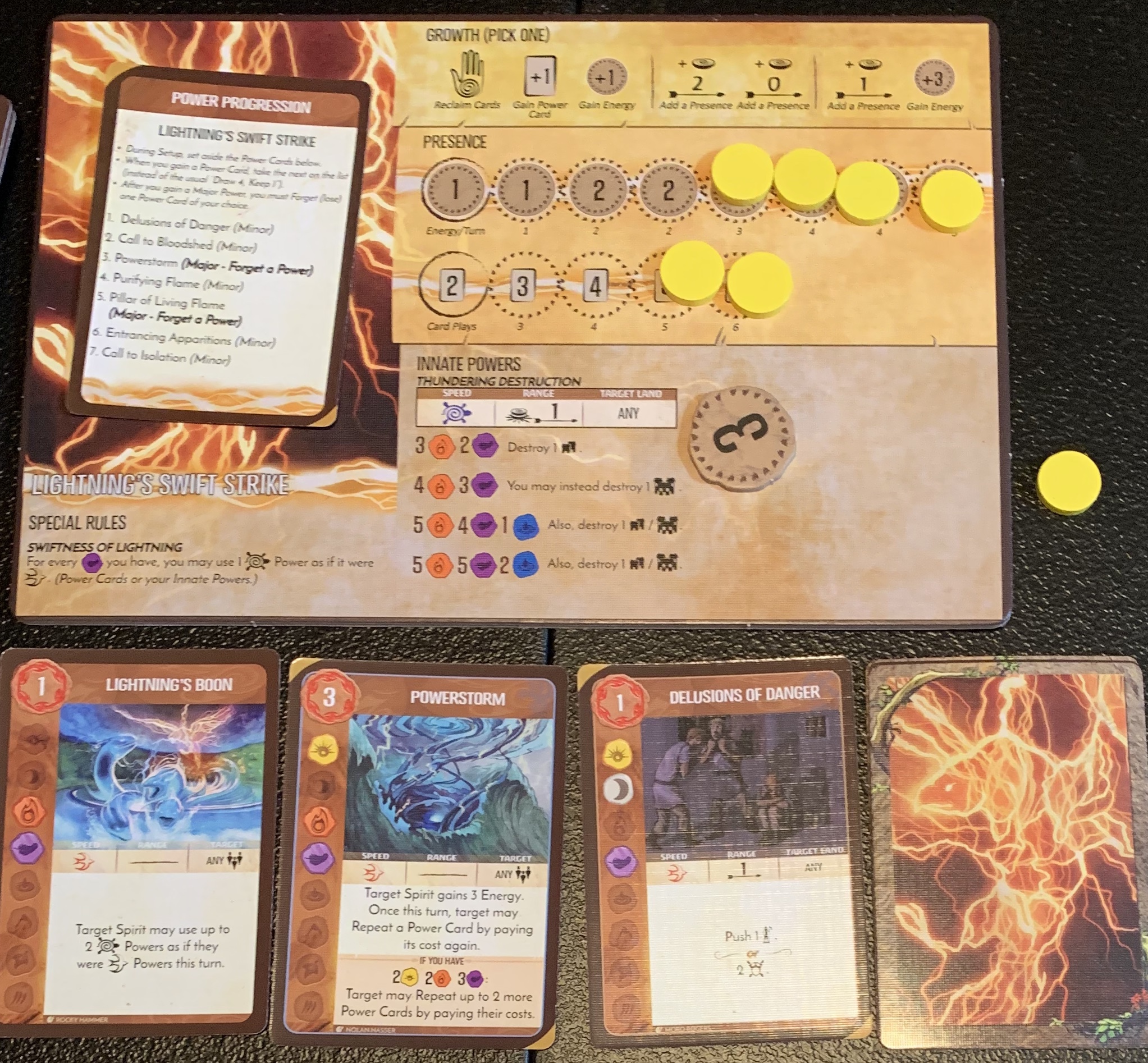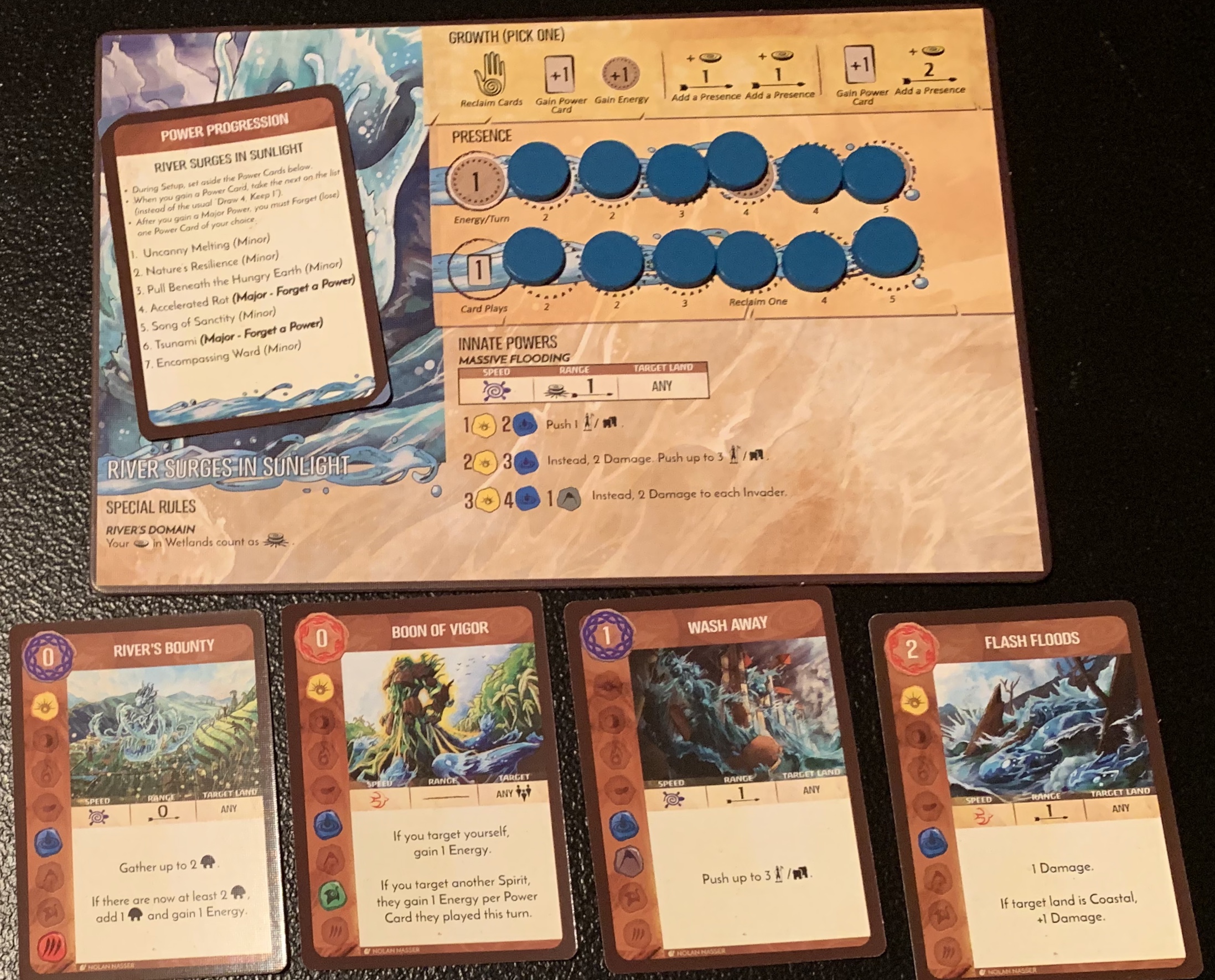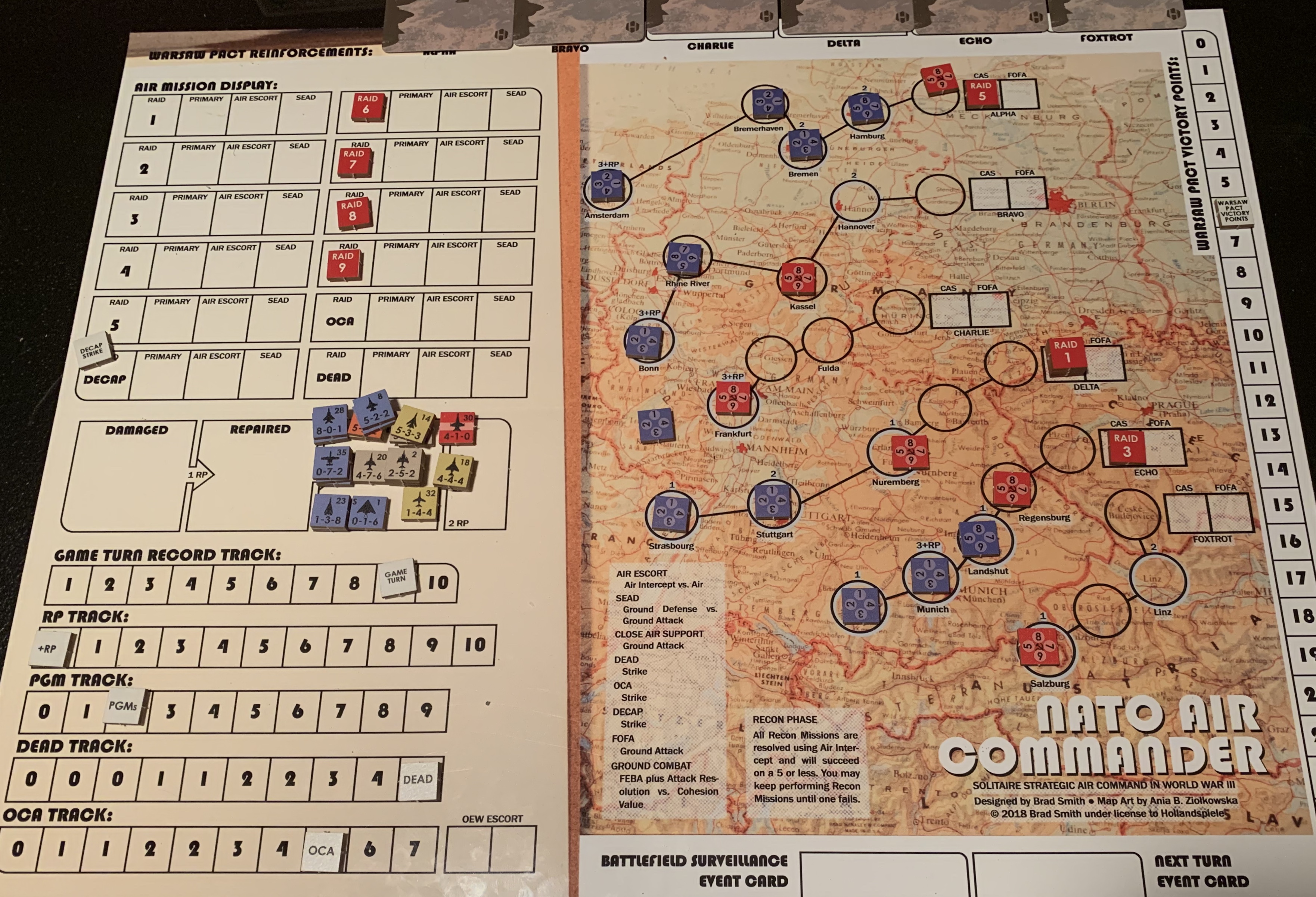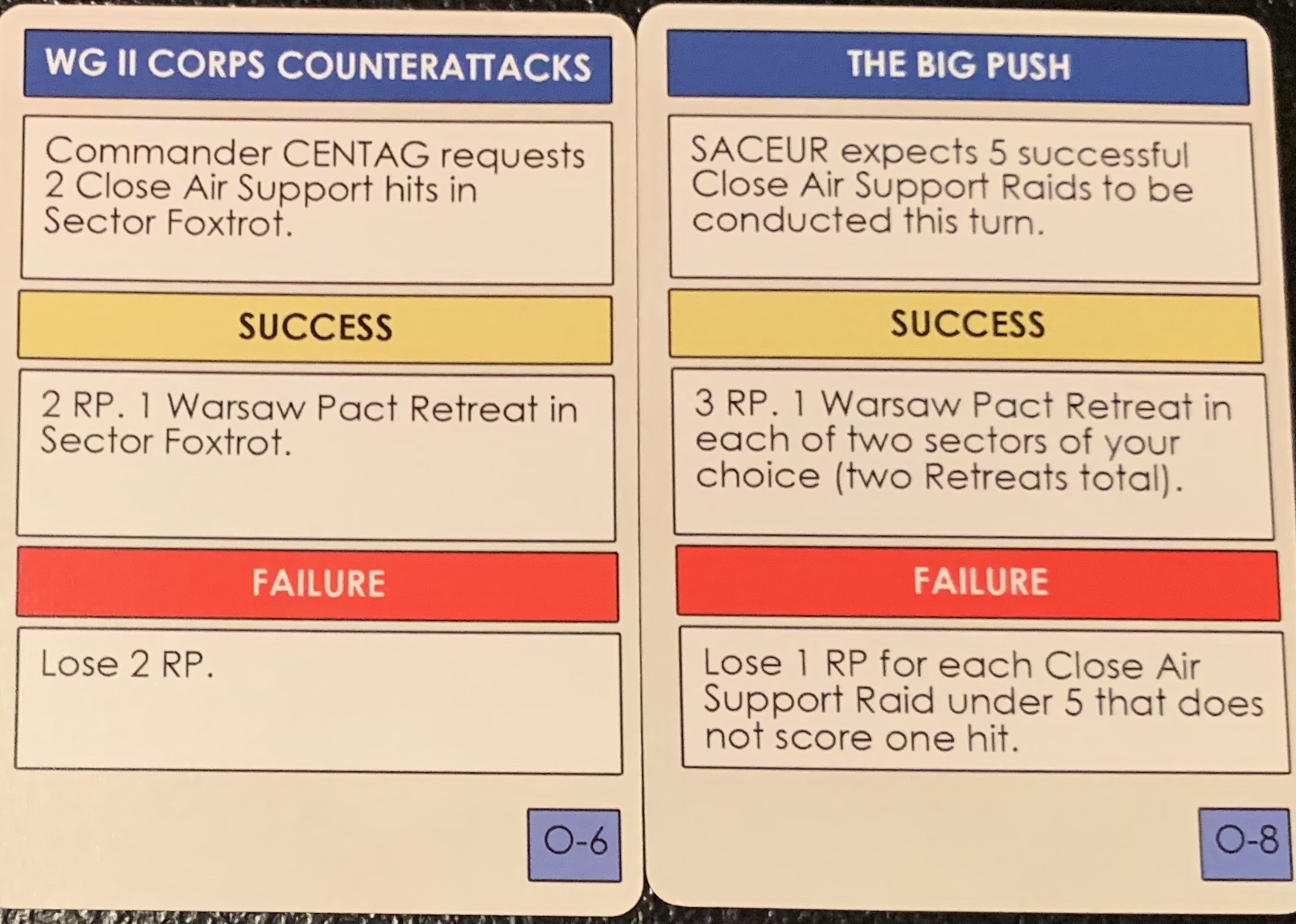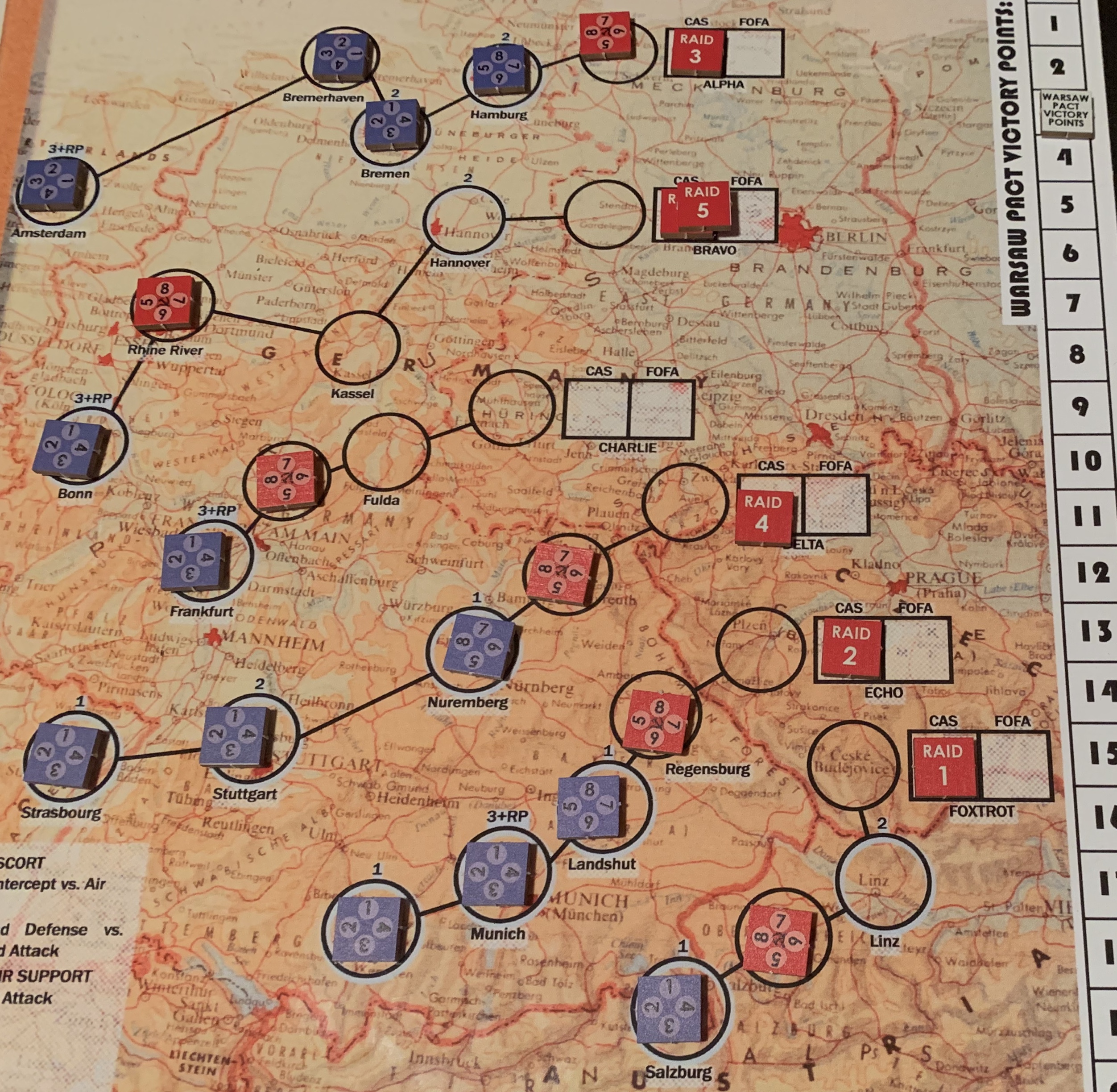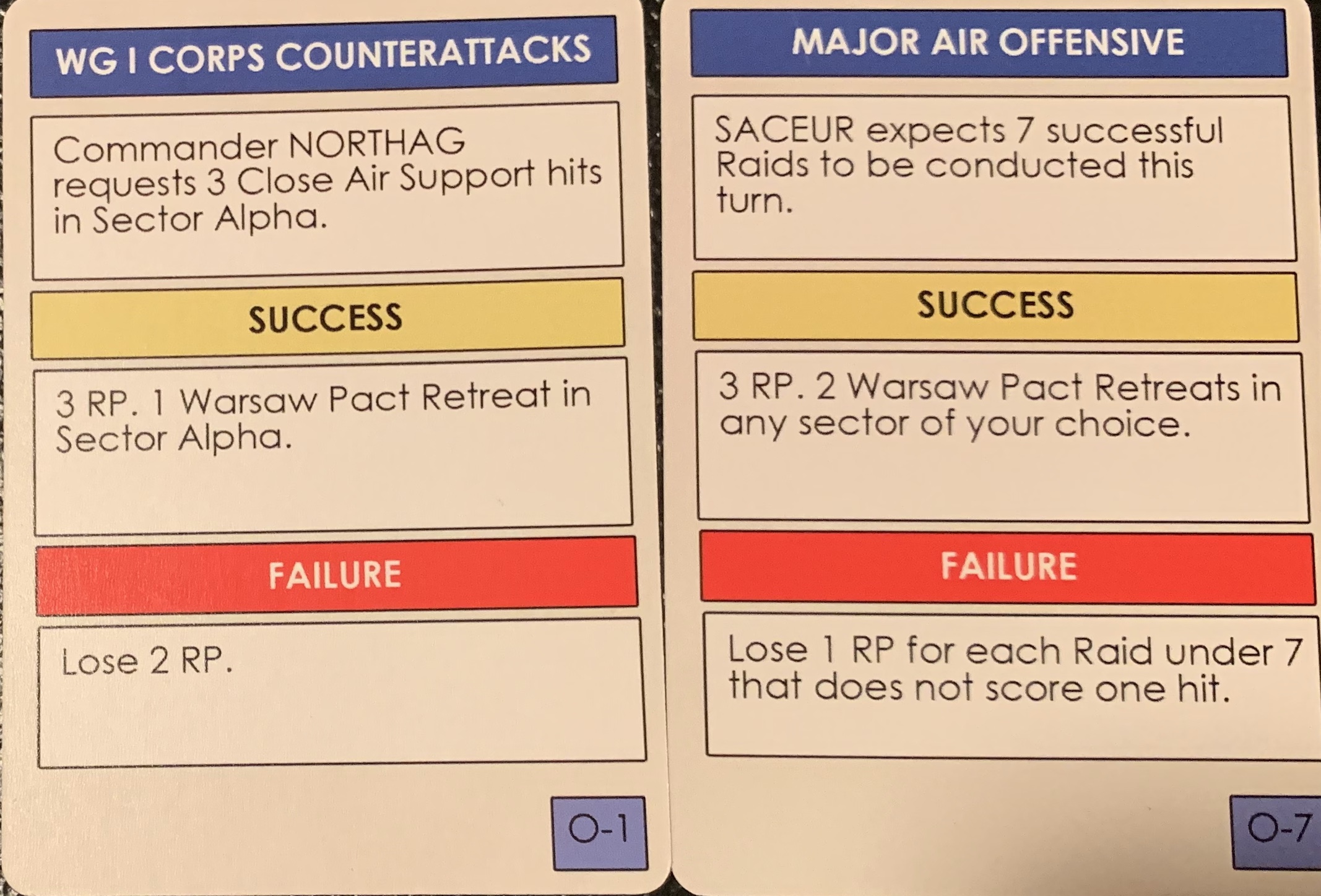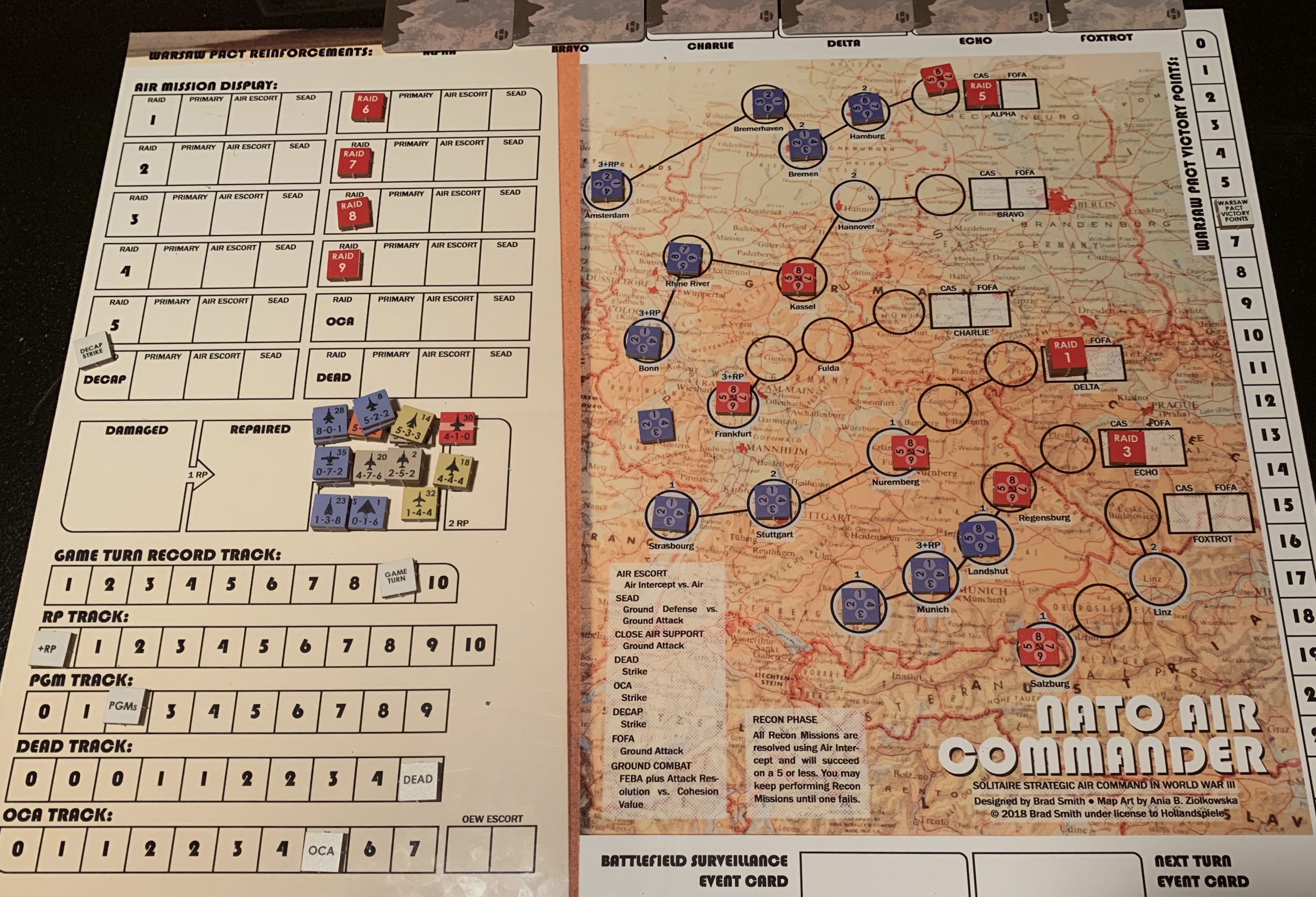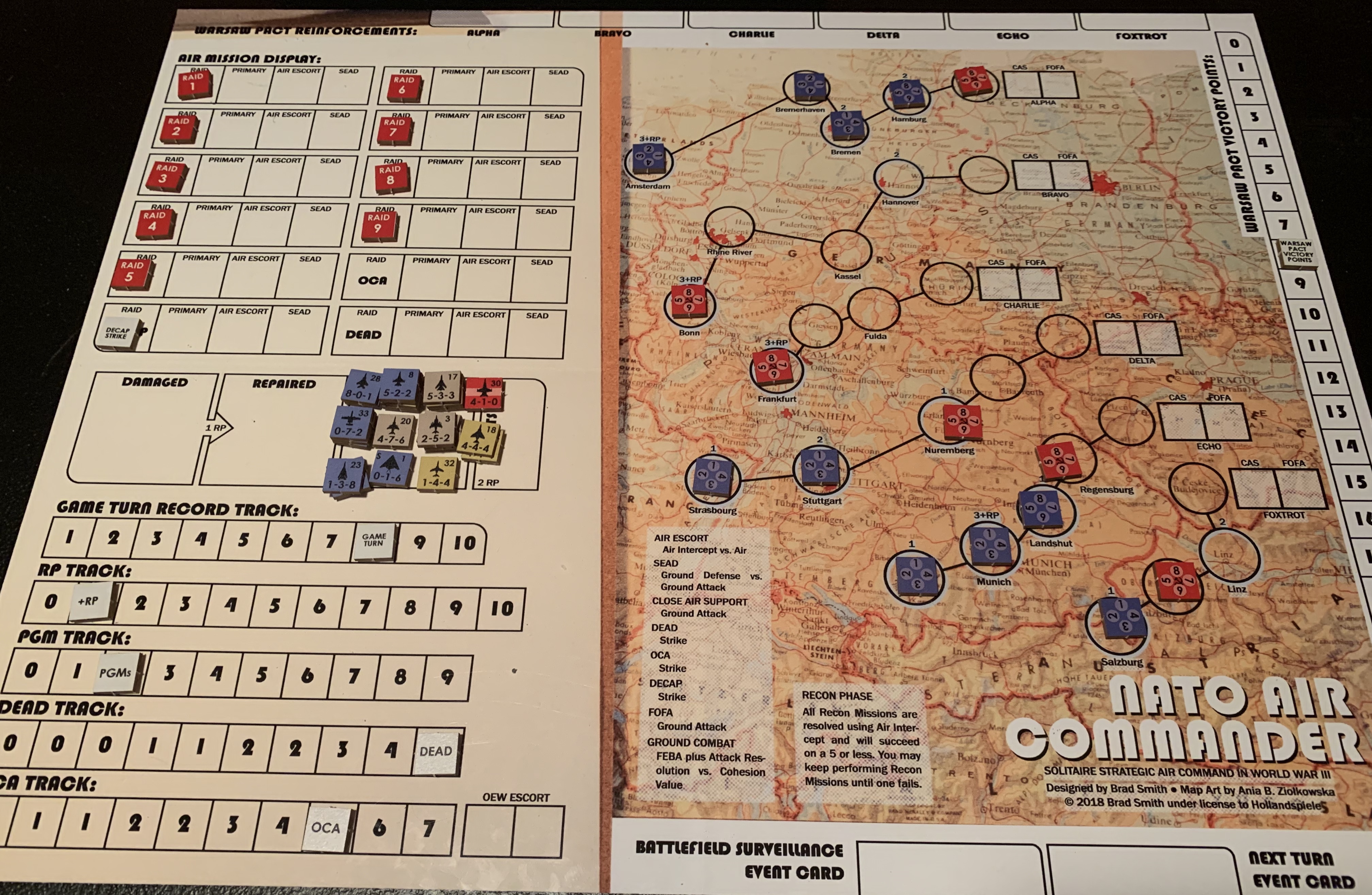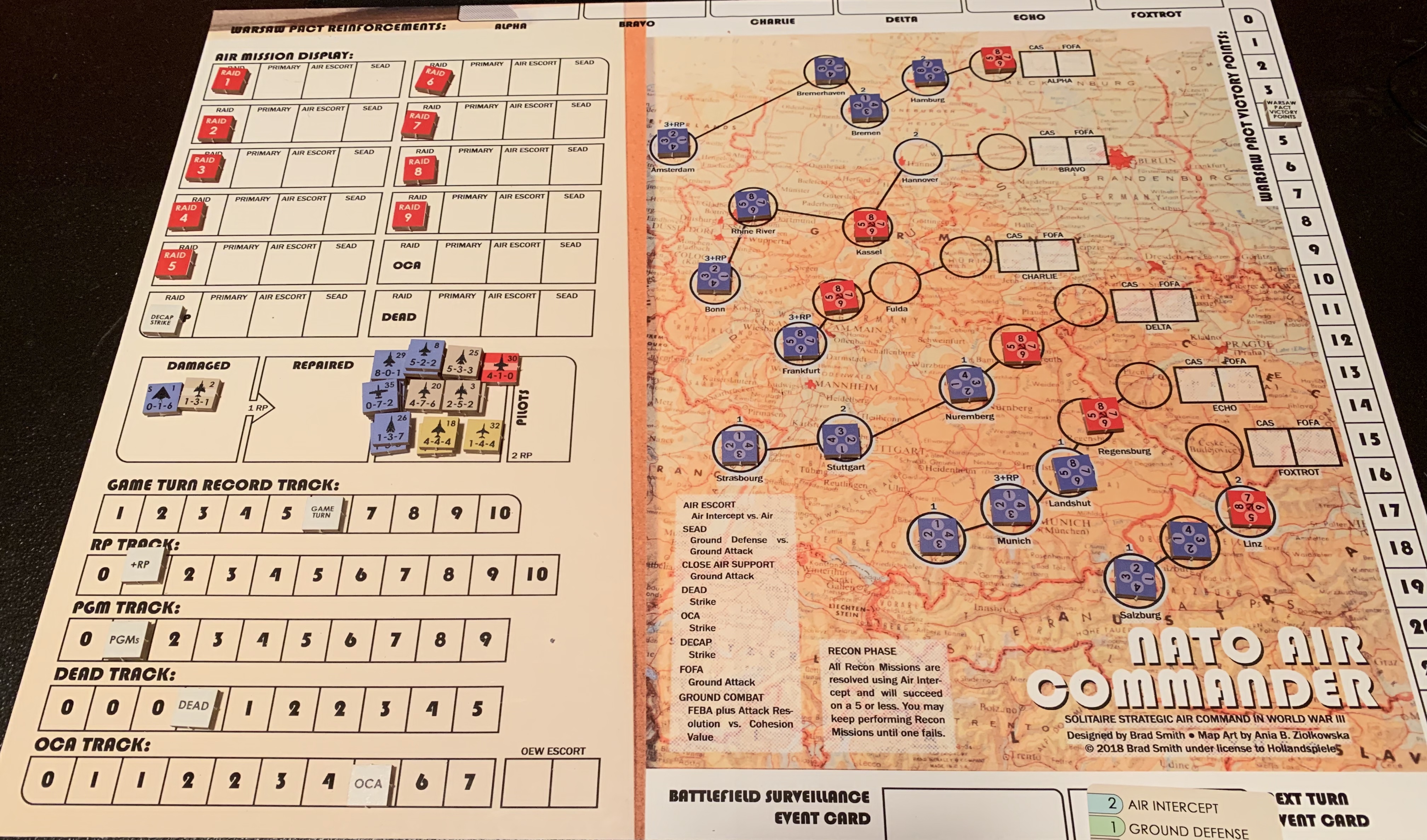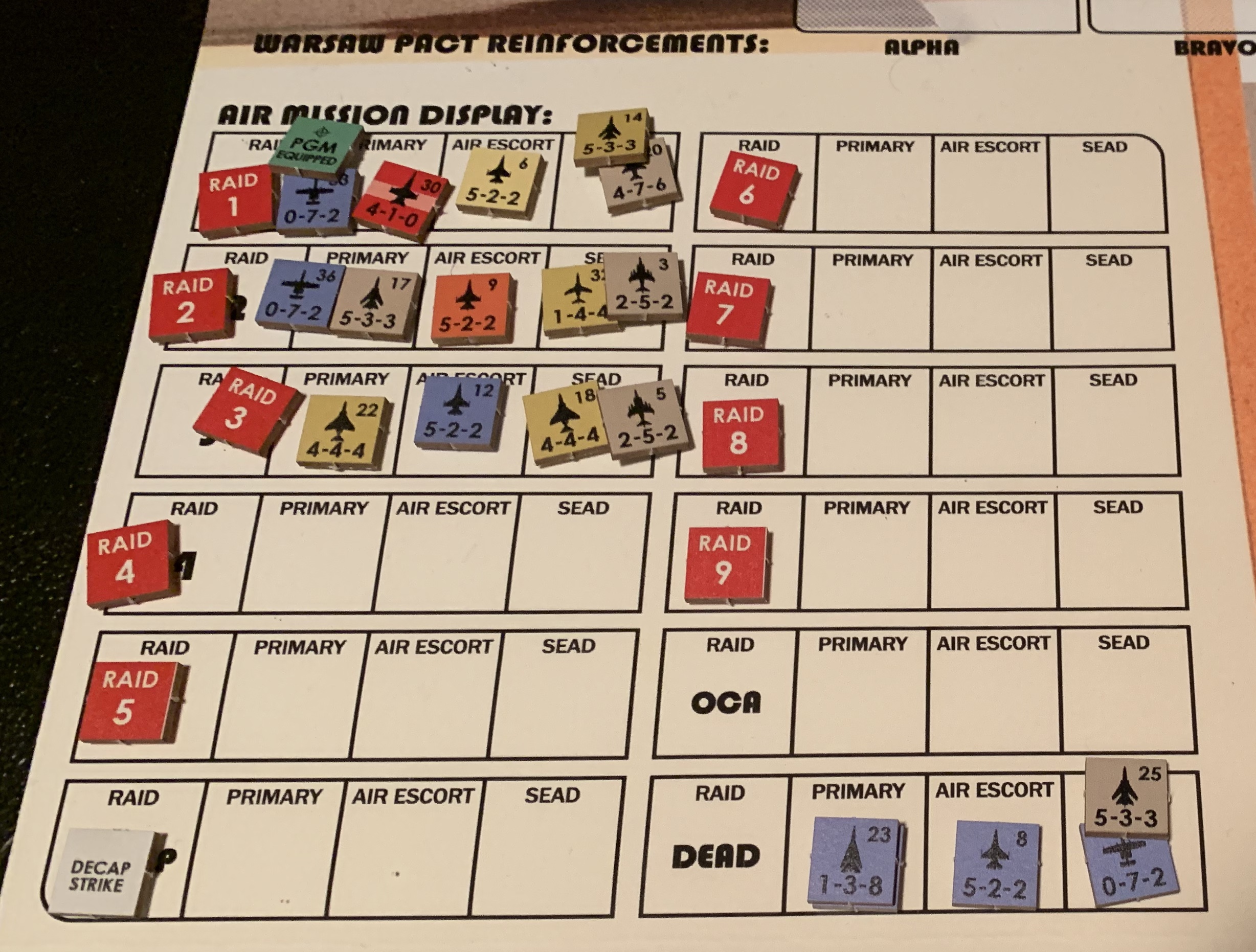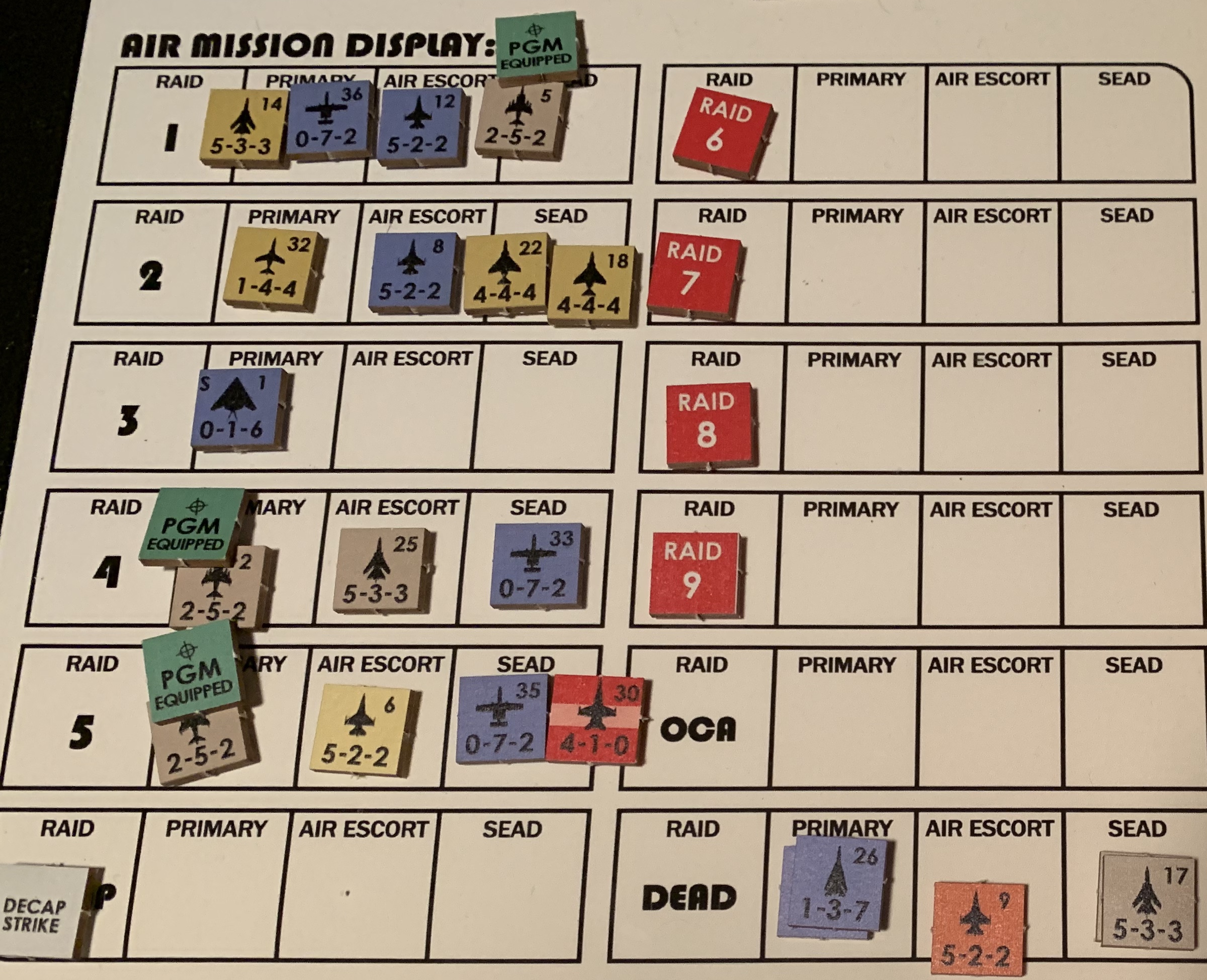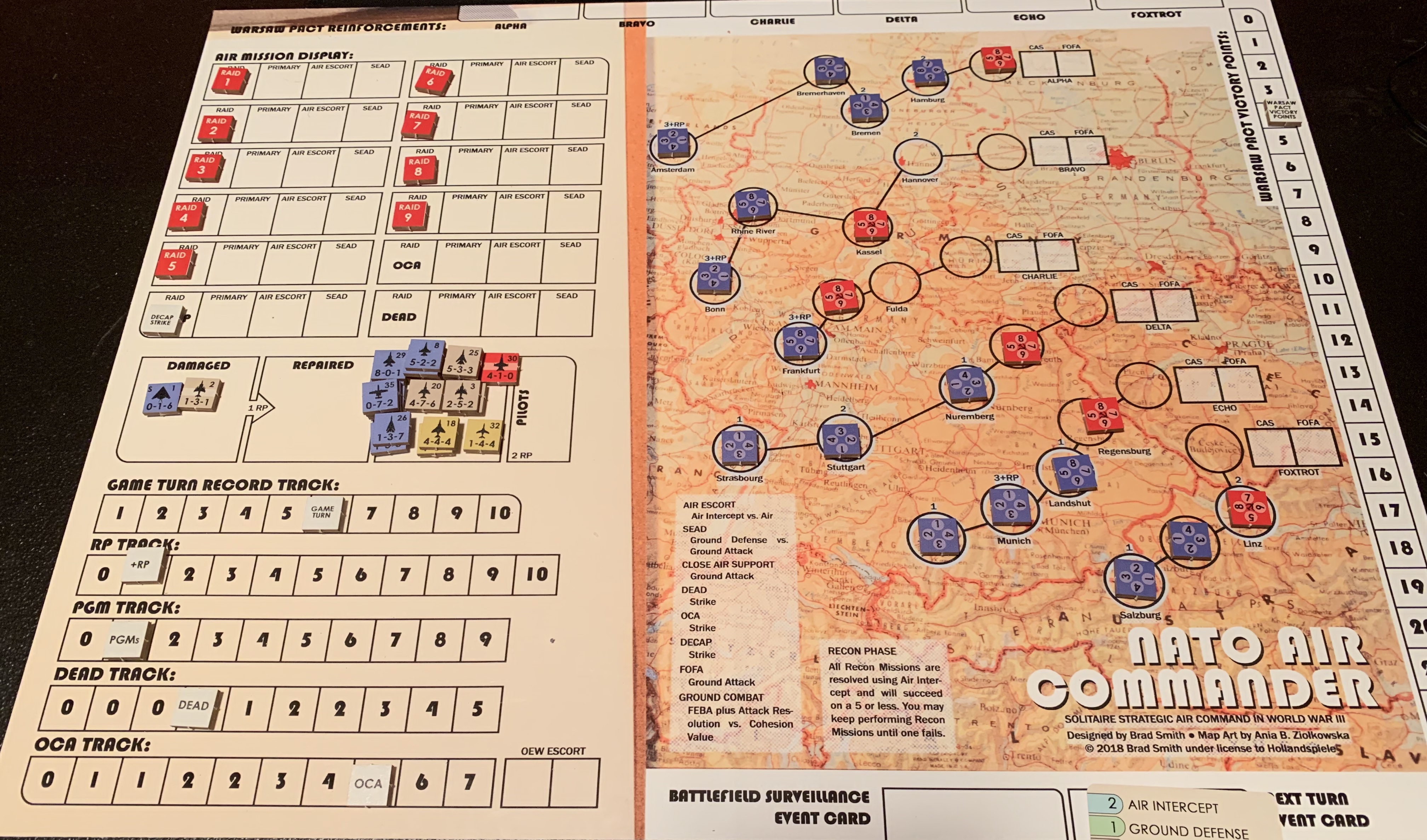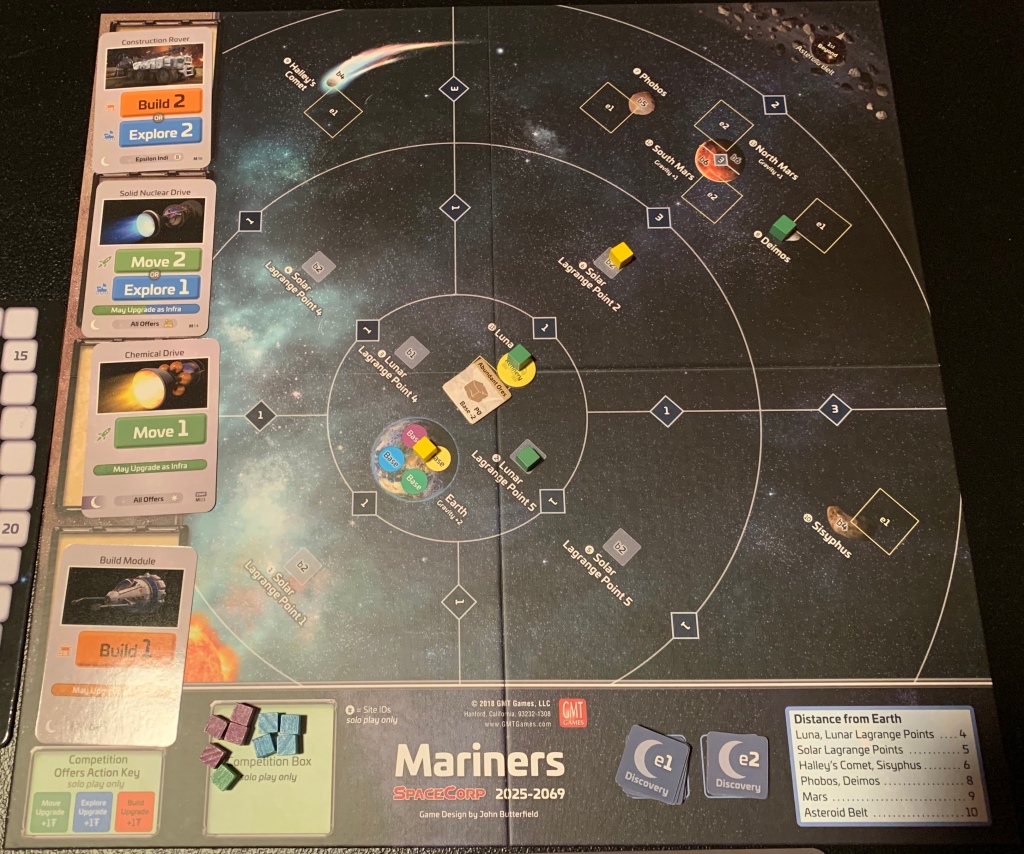
Turns 6-10
Dynamic Synergistics began an attempt to establish itself as a monopsony in the market for space equipment, purchasing Construction Rovers, Solid Nuclear Drives, and Chemical Drives. (Offer 1, 2, 3 profit on yellow). The market moved from exploration to construction, as a Heavy Lifter (Move 2 Build 2) and two Processors (Produce 1 Build 2) entered the market. Meanwhile, on Solar Lagrange Point 2, a team of SpaceCorp engineers constructed a spaceport out of a discarded cargo pod and service survey module to enable exploration of Mars and the asteroid belt. SpaceCorp R&D developed advance Salvage techniques, which could increase profitability. (Draw Salvage Card, P1 Edge: +1 Profit, take all “Start” cards from offer set).
Dynamic Synergistics continued its buying spree, this time snapping up all available processors. (Offers 1, 3, +2 Profit). The market shifted its focus to Solid Nuclear Drives and Excavators. SpaceCorp upgraded its infrastructure, deploying Solid Nuclear Drives to allow for teams to travel from the Solar Lagrange Point 2 Spaceport, dubbed Tosche Station, to Mars. The engineering team remaining on earth relocated to Tosche Station, no doubt to pick up some power converters, and they brought along a new survey module. (Draw Survey Module Explore 1, Build 1, upgrade).
The China National Space Administration (CNSA) continued its efforts to explore Deimos, locating available water and constructing an industrial base on the moon. (+1 Profit). The CNSA then sent an additional team from Deimos to North Mars, hoping to beat SpaceCorp to the punch in establishing a Mars base. SpaceCorp sent its own team of engineers from Tosche Station to South Mars, planning to race the CNSA. SpaceCorp acquired a heavy lifter to assist in its construction efforts.
Dynamic Synergistics cannot be stopped in its efforts to purchase space-related technologies, even if it has yet to launch a successful craft. They purchased the Solid Nuclear Drive, Excavators, and Build Modules available on the market, and raked in a tidy profit reselling them to other companies. (Offers 1, 2, 4, +2 profit). The market for space related goods shifted from exploration to research, as two Genome Accelerators (Research 2, Genetics 1) entered the market. SpaceCorp continued its plans to explore South Mars by investing in upgrading its infrastructure with survey modules. Planning to exploit resources on Mars, SpaceCorp Acquisitions purchased a Core Driller (Produce 1, Explore 2).
The CNSA was still pushing to compete with SpaceCorp, and moved its own team of Engineers to South Mars, hoping to discover and exploit any resources there before SpaceCorp could find them. Unfortunately for the CNSA, SpaceCorp launched an exploratory mission on Mars’s Southern Hemisphere, and identified Exotic Elements, which both provided immediate profit (+2) and promised to be productive in the future (P1). Bases would be more expensive here, however, as exotic elements proved to be a radiation hazard. SpaceCorp’s team started laying the ground work for a base on the tile, while SpaceCorp Acquisitions purchased another Core Driller, hoping to exploit the Martian elements.
[I intended to get a picture of the board at this point, but I failed to do so. I was really excited about getting my Mars base built, and just kept pushing onwards. For reference, the current score is Competition: 8 profit, SpaceCorp: 2 profit. There is a Competition industrial base on Deimos, and SpaceCorp bases on Luna (Refinery) and Solar Lagrange Point 2 (SpacePort). Competition teams are on Luna, Lunar Lagrange Point 5, Deimos, North Mars, and South Mars. SpaceCorp’s infrastructure is Default Research 2, Default Move 1, Solid Nuclear Drive (Move 2, Explore 1), Survey Module (Explore 1 Build 1). No contracts have currently been fulfilled.]
Turns 11-15
The CNSA, not satisfied to let SpaceCorp claim Mars, explored Mars’s Northern Hemisphere, discovering Water. (+1 Profit). Meanwhile, Dynamic Synergistics began efforts to fulfill an infrastructure contract. (Cube to contract 6). SpaceCorp finally implemented its Salvage protocols (+1 Profit), and embarked on a Research, Development, and Acquisition campaign, acquiring a Heavy Lifter from the market and developing an new build module.
Dynamic Synergistics, continues its acquisition efforts, profiting by speculating on the market for surveying equipment. (Offers 3, 4, +1 Profit). The exisiting Survey Pod and Genome Accelerator on the market were replaced by a Solid Nuclear Drive and a Build Module. SpaceCorp quickly swooped in to acquire the build module, and through additional “market research” determined how to disrupt the operations of the competition. (Research, Take Build Module from Market, draw Intercept).
Dynamic Synergistics, having acquired a large percentage of the market’s production of space faring equipment, finally launched a successful mission, placing a team on Sisyphus, an asteroid in near earth orbit. SpaceCorp put Project Intercept into effect, allowing it to steal a march on its competition. (Play Intercept edge card, take an additional turn after this one). SpaceCorp began a massive construction effort, using a team of Heavy Lifters and Build Modules, building a refinery to take advantage of the Exotic Elements on South Mars. This construction fulfilled the first Mars Base contract. (+3 Profit). SpaceCorp R&D developed a new survey pod.
After the successful completion of the South Mars base, SpaceCorp began to produce Exotic Elements using Core Drillers. (+2 Profit). This fulfilled the first production contract. (+2 Profit; SpaceCorp now at 10 Profit, Competition at 9).
Dynamic Synergistics’ subsidiary, Synergistic Dynamics, started bulk purchasing survey equipment from the market. (Offers 1, 3, 4, +2 Profit). SpaceCorp continued its core drilling campaign, continuing to exploit Mars’s resources. (+2 Profit).
A new competitor, Strategic Space Survey and Mining (3S&M), announced its presence by launching a team to Lunar Lagrange Point 4, intending to build a Spaceport for launches in the near solar system. SpaceCorp focused on its infrastructure, adding Chemical Drives to help assist in transport of Exotic Elements. (Play Chemical Drive upgrade, fulfill contract +2 Profit).
[Deck exhausted, so there is one final turn for SpaceCorp.]
SpaceCorp, sensing that the next big thing in space exploration would be exploitation of resources beyond the Asteroid Belt, sent its South Mars team on an advance mission to the Asteroid Belt, identifying potential cites for bases. (Take First Beyond marker).
End of the Mariners Era
With the exploitation of the near solar system complete, SpaceCorp and its Competition turned their attention to the outer solar system. SpaceCorp’s lucrative South Mars refinery continued to produce valuable elements well into the new era. (Keep Exotic Artifacts and Refinery as legacy production).
Thanks to SpaceCorp’s asteroid belt team, SpaceCorp has already identified a suitable location for development. The asteroid Ceres turns out to be another substantial source of exotic elements, furthering SpaceCorp’s grip on the exotic element extraction industry. (Discover an E1 tile that has me draw an E2 tile. E2 tile is Exotic Elements, +2 Profit, P1).
SpaceCorp stands strong, preparing efforts to extend beyond the inner solar system.
